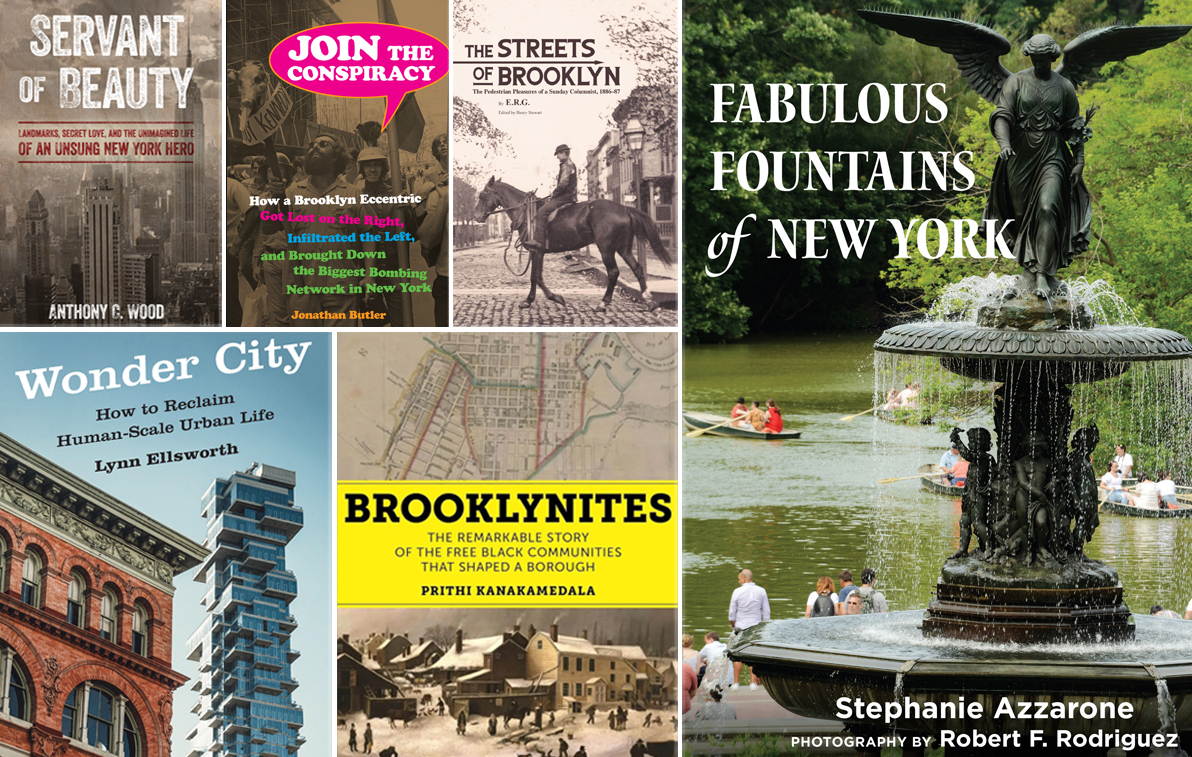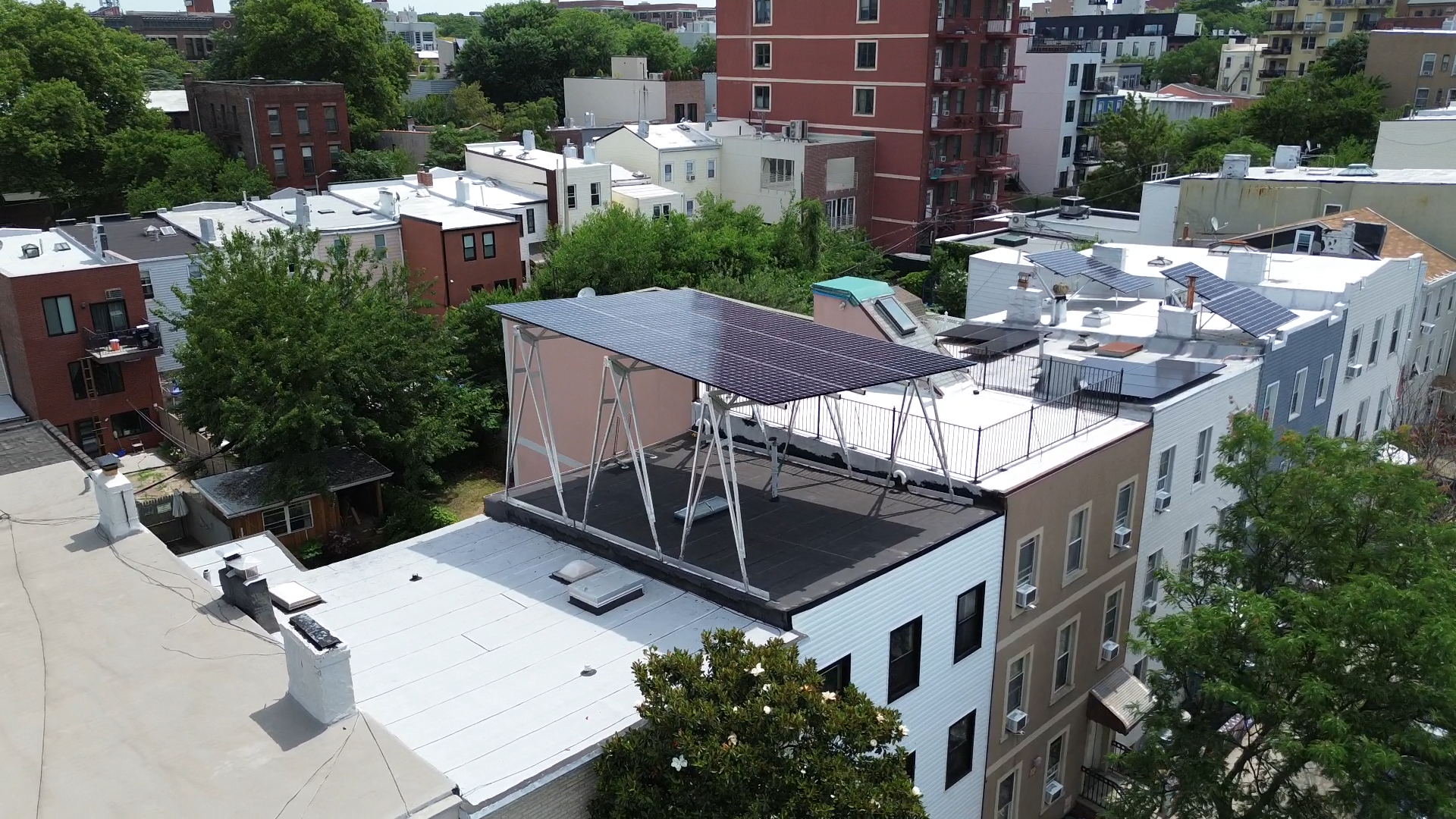Two Lanes for Two-Wheelers on Prospect Park West
The reduced car access to Prospect Park isn’t the only bike-friendly change in the works for the Park Slope area: The Department of Transportation showed off a plan for a two-way bike path along Prospect Park West at a Community Board 6 meeting on Thursday night, reports The Brooklyn Paper. The move would eliminate one…


The reduced car access to Prospect Park isn’t the only bike-friendly change in the works for the Park Slope area: The Department of Transportation showed off a plan for a two-way bike path along Prospect Park West at a Community Board 6 meeting on Thursday night, reports The Brooklyn Paper. The move would eliminate one lane of car traffic, something that advocates claim would have ancillary safety benefits. “Prospect Park West needs traffic calming, and it needs to be more accommodating to all users,” said Joshua Benson, DOT’s bike program coordinator; only a few parking spaces would be lost. Unlike the traffic reduction measure for the park that is being vociferously opposed by Community Board 7, the bike lane proposal has the support of both CB6 and Transportation Alternatives. “It’s a pretty good package,” said TA’s Wiley Norvell. You get safer access to the park — and the chance to put in an innovative bike lane in one of the densest cycling communities in the city.
City Rolls Out Two-Way Bike Lane on PPW [Brooklyn Paper]





Bxgrl,
Until very recently, the DOT focused all its energies on moving cars around. When the DOT started putting in bike lanes, more people started riding. Not sure where you get the info that bike lanes don’t encourage people to ride – they most certainly do, especially when they are protected lanes. W
hy is it unrealistic to think that people who drive will give up their cars when the individual cost of driving is made to more accurately reflect the social costs of driving? Higher gasoline costs alone significantly reduced driving last year. Let’s try congestion pricing and see what we can accomplish.
Let’s close the Park Drives to cars altogether. I have no doubt at all that not a few of those drivers have a time-competitive mass transit alternative and would be more likely to use it if they couldn’t drive through the park. The extra five to eight minutes that driving around the park would cost might encourage a number of people to take the subway.
Let’s take away parking privileges from all the civil servants who park for free all over the place. Most of them don’t need it — why does a judge working 9-5 in lower Manhattan, where every single subway line goes, need to drive to work? Did you know that 35% of the people who drive to work in Manhattan have parking placards? Don’t you think if they had to pay for parking like everybody else, or look for street parking, they might take the subway instead???
Why do you think that because Americans are car-centric, we can’t change? Especially in a city with an excellent mass transit system (yes, it is, compared to anywhere else in the country) and a climate and topography which allows people to ride their bikes a substantial portion of the year.
I just don’t understand this idea that New York City is incapable of significantly reducing automobile traffic.
The city’s problem is that it never thinks things all the way through- and they’re thinking more bike lanes will mean more people taking bikes or even mass transit if driving is made too inconvenient. But it’s unrealistic to think people who drive will give up their cars when there is not enough mass transit in the first place,or accomodation for all the businesses that must depend on vehicles. Even doing errands like grocery shopping – we’ve been car-centric too long.
That said, Prospect Park should be restricted, and the traffic circle re worked- for everyone, not just those on bikes, but pedestrians too.
Guess I just don’t get how reducing road capacity would not worsen traffic flow, everything else being equal.
Also I don’t see why the City is going out of its way to spend money to accommodate a small section of the population. Sure, if there are more bike lanes a few more people will ride but I find it hard to imagine the numbers being material to the overall transportation mix.
Rather it seems designed to placate a particular demographic (of which I am a member, in some ways) and check all the right politically correct boxes.
Again, Etson, because your friend find the *commute* fine… doesn’t tell me anything! He takes an off-peak moment to find his way to a parking spot in Manhattan…
It’s the “plan the timing of your day” that is the problem!!! Not everyone has this luxury and delivery trucks have to get around the city at ALL times of the day. They are stuck in the muck.
I never said a bike lane or narrowing streets will cause less gridlock — I was pointing out that the logical necessity you described is not the case!! It’s not a bike lane *and* more gridlock. The latter doesn’t necessarily follow. If it is done right and parochial concerns are ignored for the greater benefit, you can have a transportation infrastructure that OPERATES BETTER and serves the varied needs of MORE!
It’s not just about bike lanes… it’s about adding alternatives!! Those folks commuting from NJ by car… what if there was an alternative that brought them to their jobs just as quickly, but didn’t have to deal with Manhattan traffic and parking? Better park-and-ride and better trains across the river, what if the trains from NJ accommodated bikes during rush hours?! …. guess what, then you colleagues that are still committed to driving would have an EASIER time of it.
‘so a few people can ride bikes’ Making the city more bike friendly encourages more people to ride. You have to start by giving people safer ways to navigate the city.
And I also have colleagues now who commute into the city from NJ by car with few problems. Just have to plan the timing of your day better if you do that.
Tybur6,
I don’t think narrowing roads so a few people can ride bikes will be a positive change to NYC’s infrastructure. Rather it makes things less convenient for most people so a relatively small number can feel good about themselves.
I am confused by your argument that less road capacity will cause less gridlock – unless you are arguing for making things much worse deliberately so that driving is impossible.
Etson… you left the city and came back. You didn’t drive around the city. Try running errands by car in Manhattan around 11:30am — or better, try to be a delivery truck driver in the city all day.
You’re experience wasn’t a “drivable city” — it was a city you didn’t seem to have much trouble leaving (in the opposite direction of the prevailing flow)
But that’s really beside the point. It’s simply wrong to think a city of 8, 9, 10, 15 million people could be based on a car/bus/taxi infrastructure! It is already showing signs of failure and it will just get worse as the population grows.
HA!
in reality it’s [Parking] [Deliveries] [Travel Lane] [Travel Lane] [Double Parking] [Illegal standing]